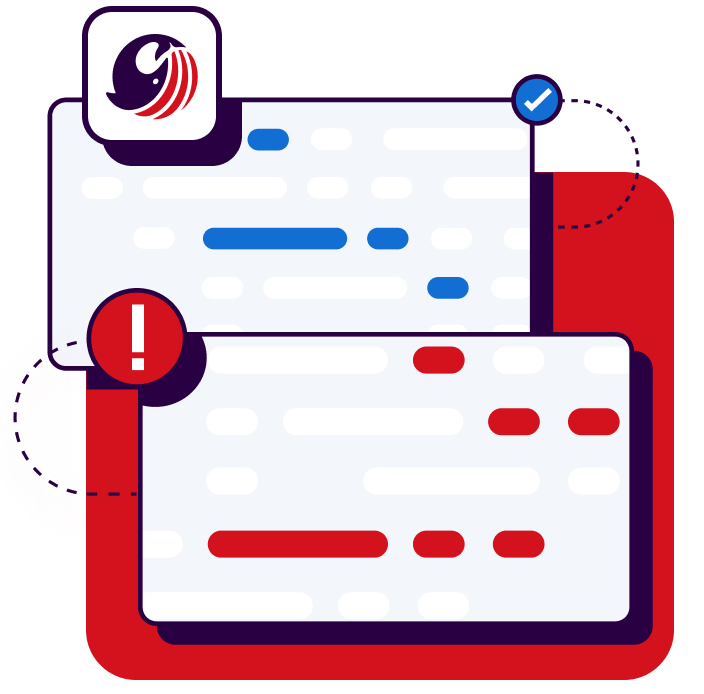Start your free trial
Verify all code. Find and fix issues faster with SonarQube.
Get startedTRUSTED BY 7M+ DEVELOPERS & 400K+ ORGANIZATIONS
What is legacy code in software development?
Legacy code refers to existing source code that is inherited from previous projects or earlier versions of a software system. This code often operates on outdated technologies or platforms but remains integral to an organization's operations due to its critical functionality.
Legacy code can be challenging to maintain and enhance, primarily because it may lack proper documentation, be written in obsolete programming languages, or have a complex and monolithic structure. These factors contribute to difficulties in understanding the codebase, leading to increased maintenance costs and potential risks when implementing changes.
Effectively managing legacy code – a resource-intensive part of software development – is crucial for business efficiency. Key strategies include code refactoring to improve readability and software modernization to enhance performance.
Understanding existing systems through software archaeology informs future development. Addressing legacy code reduces technical debt, improves reliability, and enables business agility, ensuring long-term competitiveness and alignment with strategic goals.
Why is legacy code important?
Legacy code is often fundamental to current business operations and plays a pivotal role in maintaining and evolving software products. It represents a repository of functional knowledge and business logic that has been tried and tested over time.
Legacy systems are important because they enable continuity. Businesses are dependent on the legacy code and systems in place to keep and ensure continual business momentum. As technologies and personnel change, legacy code ensures that the system's essential functionalities are preserved. This continuity is vital for businesses that rely on stable, ongoing operations.
How to work effectively with legacy code
Working effectively with legacy code is a critical skill in software development, as many organizations rely on existing systems that lack proper documentation or are built with outdated technologies. To manage and improve such codebases, developers can adopt several strategies.
Implement Automated Testing
Before modifying legacy code, it's essential to establish a suite of automated tests. These tests serve as a safety net, ensuring that changes do not introduce new bugs.
Incremental Refactoring
Incremental Refactoring involves restructuring existing code to improve its readability and maintainability without changing its behavior. This process should be done incrementally, guided by the tests to ensure functionality remains intact. Common refactoring techniques include extracting methods, renaming variables for clarity, and breaking down large classes into smaller, more manageable ones.
Utilize the Strangler Fig Pattern
This pattern involves gradually replacing parts of the legacy system with new implementations. Developers create new components alongside the old ones and slowly phase out the legacy code as the new system takes over functionality. This approach minimizes disruption and reduces the risk associated with large-scale rewrites.
Practice Software Archaeology
Delving into legacy code often requires understanding its original design and intent. Software archaeology involves studying the codebase to uncover its structure and dependencies, which aids in making informed decisions about modifications and improvements.
Apply Defensive Programming
When working with legacy systems, it's prudent to anticipate potential errors and handle them gracefully. Defensive programming techniques, such as input validation and error handling, can prevent unexpected issues and enhance the robustness of the code.
Engage in Code Reviews and Pair Programming
Collaborative practices like code reviews and pair programming can enhance code quality and facilitate knowledge sharing among team members. These practices help in identifying potential issues early and promote collective ownership of the codebase.
Leverage Version Control Systems
Utilizing version control allows developers to track changes, understand the history of the codebase, and coordinate modifications effectively. This practice is invaluable when refactoring or modernizing legacy systems.
By systematically applying these strategies, developers can transform unwieldy legacy code into maintainable and efficient systems, ensuring that the software continues to meet evolving business needs.
Legacy code and SonarQube
SonarQube is a powerful tool for managing legacy codebases, offering features that help organizations maintain and improve code quality over time by focusing on the quality of new or modified code rather than attempting to rectify all existing issues at once. This method allows teams to prevent the introduction of new problems while gradually improving the overall codebase.
To support this approach, SonarQube provides mechanisms to monitor and enforce quality standards on newly written code. By setting up Quality Gates, teams can define criteria that code must meet before it is integrated, ensuring that new code adheres to the organization's quality standards.
